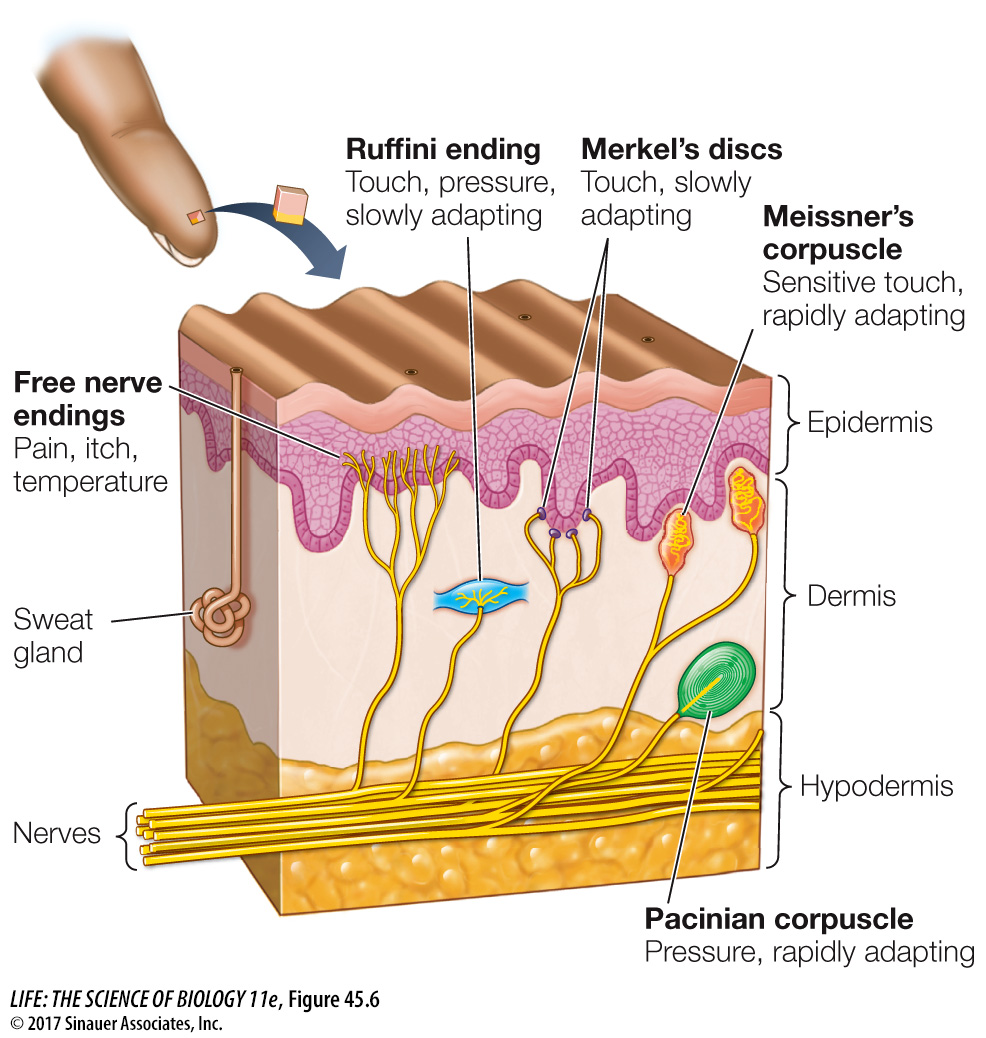Many different receptor cells respond to touch and pressure
Human skin (and that of other mammals) is packed with diverse mechanoreceptors that generate varied sensations (Figure 45.6). The most important tactile receptors, found in both hairy and non-

Deeper in the skin, Ruffini endings adapt slowly and are good at providing information about vibrating stimuli of low frequencies, while Pacinian corpuscles, which adapt rapidly, provide information about vibrating stimuli of higher frequencies. Even deeper in the skin, the dendrites of sensory neurons wrap around hair follicles. When the surface hairs are displaced, those neurons are stimulated.
The density of tactile mechanoreceptor cells varies across the body’s surface. By touching the skin with two toothpicks simultaneously (when a person’s eyes are closed!), you can determine how far apart two stimuli have to be before the person can tell whether the sensations are produced by one toothpick or by two. On back skin, stimuli have to be relatively far apart before they are perceived as two discrete stimuli. But when this same “two-